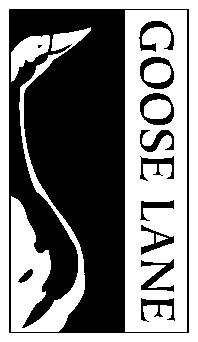In 1927 five women brought a case to the Supreme Court of Canada to establish the right of women to be appointed to the Senate. These women were Emily Murphy, Henrietta Muir Edwards, Nellie McClung, Louise Crummy McKinney, and Irene Parlby. At the time women were not legally recognized as “persons” and could be denied rights based on narrow interpretations of the law. In fact, while some women in Canada gained the right to vote in 1916, many women — particularly women of colour — did not. By 1960, all women in Canada won the right to vote.
In recognition of the “Famous Five” bringing this case to the SCC, we have chosen five of our women authors to spotlight for Women’s History Month. These authors produce award-winning writing we love to read, and we’ve included some of their reviews and interviews as well.

Here’s a brief book list for our “Famous Five” interpretation:
- Annie Pootoogook: Cutting Ice
- Annie Pootoogook was an Inuit artist whose family had a history of creating art in multiple mediums and styles. Her mother was a draftswoman, her father a printmaker and stone sculptor, and her grandmother a renowned graphic artist. Annie Pootoogook worked primarily in pen and coloured pencil drawings, portraying the life and experiences of those living in her community of Cape Dorset. She was the first to gain international recognition as a contemporary Inuit artist and portrayed both the dark and light sides of her experiences. After exhibiting in major international events, she opened the door to other contemporaries in Nunavut including Shuvinai Ashoona, Itee Pootoogook, and Siassie Kenneally. She passed away in August 2016.
- Käthe Kollwitz
- Käthe Kollwitz (1867–1945), was a German artist who worked as a painter, printmaker — including etching, lithography and woodcuts — and sculptor Her interactions with working-class women in Berlin and exposure to two world wars informed the depictions of human suffering in her work. Among her over five-decade career, she produced prints and posters to protest poverty, hunger, and child mortality. Kollwitz was the first woman elected to the Prussian Academy of Arts and had two sons, of which the youngest, Peter, died in World War One. Her achievements are all the more extraordinary in light of the limited opportunities for female printmakers at this time.
- Rebecca Belmore: Facing the Monumental
- Rebecca Belmore is an internationally recognized Anishinaabe contemporary artist. Her exhibition Facing the Monumental explores violence against Indigenous communities, the cultural significance of water, and homelessness through the use of natural materials. Considered the country’s most renowned Indigenous artist, she takes her responsibility of being an artist seriously, working mostly as a performance artist. She was Canada’s official representative at the Venice Biennale, a major international arts exhibition based in Venice, held every other year. Belmore has received many awards for her work including the Governor General’s Award in Visual and Media Arts in 2013 and two honorary doctorates.
- Lezli Rubin-Kunda, At Home: Talks with Canadian Artists about Place and Practice
- Lezli Rubin-Kunda is a Canadian-Israeli artist who explores her relationship with her environment through different disciplines, including video, drawing, photography, and performance art. She has performed and exhibited in Canada, the United States, Israel, and Europe. She teaches art at Technion University in Haifa and views her art practice as a search for “deep inhabiting.” She is interested in the creative process and the ways artists find and create meaning. Her book At Home explores every artist as a world unto his or herself.
- Katherine Leyton All the Gold Hurts My Mouth
- When Katherine Leyton was writing All the Gold Hurts My Mouth, she was inspired by work that pushes the boundaries of traditional poetic form. Poetry for Leyton can be resistance, viewing the act of writing as against or outside of oppressive systems, and questioning these systems by giving voice to the oppressed. Leyton wrote the collection because she was disturbed by harmful behaviours towards women which were considered normal. Leyton sometimes feels sexism can be so absurd that she can’t help but laugh at it. If she was protesting the patriarchy, her protest sign would read “Our bodies don’t belong to you.”
